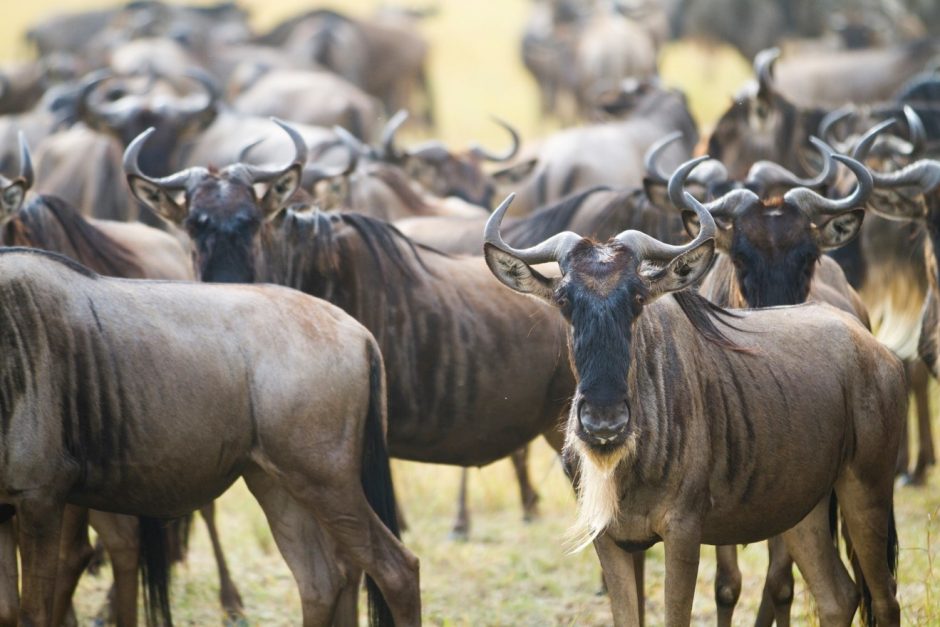
How to get this photo: Wildebeest Migration in Kenya
No doubt one of nature’s greatest spectacles, the great wildebeest migration is a top photography event and Kenya’s Maasai Mara is unparalleled. While documenting the hoards of grunting ungulates may be your aim, taking a photo that shows the true immensity of this phenomenon requires some deliberate composition and framing. Follow these basic steps to help showcase your own vision of the migration.
Get to the Right Place at the Right Time
First, you’ll need to put yourself in the heart of the action. This sounds easier than it is, as the great migration moves around a lot…and oftentimes they’ll be in an entirely different part of the savanna on a daily basis. Be sure to go with an operator you trust that has the best guides so you know you’ll be immersed in the wild. As a bonus, some safari companies offer “mobile” camps that can move with the migration – a must for any photographic safari.
Have the Right Gear
Next, you’ll want to be sure that you have a good telephoto lens. You won’t need anything massive, and a 300mm often is enough. While you will no doubt get very close to these magnificent animals, a telephoto lens is helpful for “filling the frame”, which helps showcase the volume and numbers of animals all around you.
“Fill the frame” Composition
Now that you’ve put yourself in the middle of the migration, and have the camera to do so, you’ll want to think about how to compose your shot. I generally advise filling the frame with the animals, just like I mentioned above, as it helps to show the great numbers around you. While a photo showing some of the habitat, along with the horizon, like the one below, is nice, there is something I personally really like about showing the dense concentrations of animals when every bit of the photo has a bit of wildebeest in it.

Use a Shallow Depth of Field to Show Layers and Density
Once you compose your shot, you’ll now want to think about your camera settings. My personal preference is for a shallow depth of field, which means that you have a single subject with the rest of the scene slightly blurred. Again, this evokes a grand feeling on part of the viewer, because of the layers of animals behind your main subject. In the first example photo (at the very top of this article), I chose one wildebeest at the bottom right of the frame to focus on, set my camera at f/5.6 and took the photo. I would also recommend experimenting with a shallower depth of field if your lens will allow.
Try a Variety of Photo Techniques
Finally, experiment a bit! There is no single right way to capture anything in nature, and it ultimately is up to you as to what you think looks great. Try different compositions, and take photos at all distances allowable from the migration herds. You’ll find that because of the random and oftentimes frantic behavior of these animals it’s difficult to plan on a specific arrangement or composition. Thus, the more photos you take the more you’ll enjoy your trip portfolio afterwards!
Go forward and give it a shot,
Court
Leave a reply